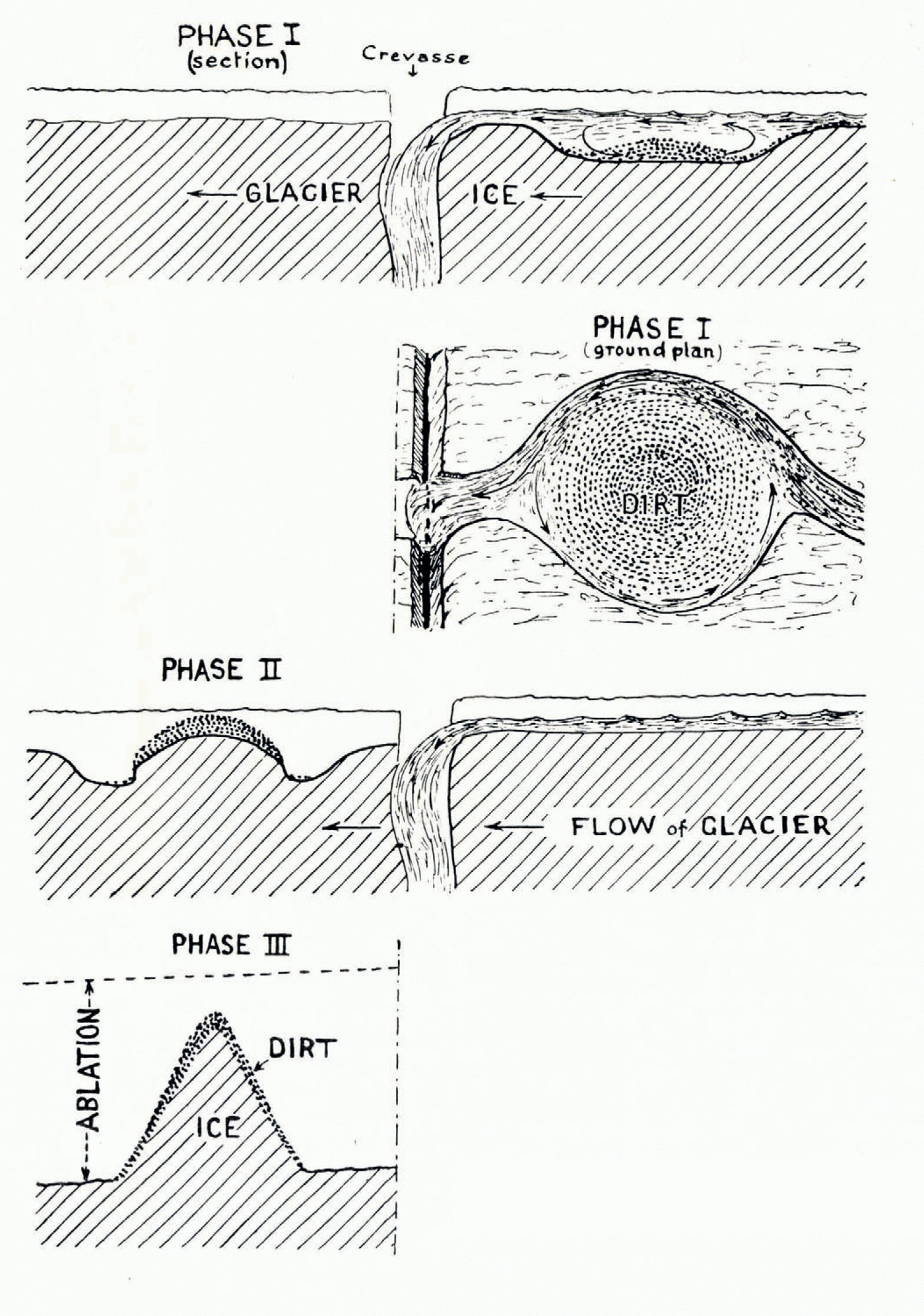Mr. Wilson confirms the explanation given by Spethmann in 1908 regarding the formation of dirt or sand cones on ice or snow, according to which the transport by wind or dust or fine sand furnishes the primary cause for the production of these cone shapes, the secondary cause being insolation. Spethmann stated that in the Alps transport by wind was certainly not often the primary cause; there the transport of sand by water was a more important factor.
I agree with these opinions, and here I would merely mention two observations which I once made. In 1921 I saw that on the flat part of the Upper Grindelwald Glacier the stream of water from the snow and ice in its meanders melted a circular flat depression in the ice as shown in the drawing on p. 367. While the water kept flowing through and passing round in spiral eddies, a thick layer of sand remained lying in the quiet centre of the depression. Downhill, a transverse crevasse cut across the glacier. I then considered that the following would happen: the glacier is moving downhill, and as soon as this meander belt has reached the crevassed region the stream will fall into the newly formed crevasse, while the depression caused by the meander will remain dry and with the sand in it. Then, in time, just as the leg of a glacier table is produced under a block of rock by insolation, here an ice-cone will be formed, over which the sand wilt lie like a cape over a man’s shoulders.

I would also like to state that I once observed how dirt cones are produced from another cause: until about 1920, the north-east end of the Clariden Firn (Canton GIarus, Switzerland) still Iay below the rocks near its end on which the hut of the Swiss Alpine Club stands. In the following years the general shrinkage of the glacier began. The upper surface sank down, becoming quite concave. The slope between the rocks above and the glacier below became continually wider. It consisted of ground moraine and marly weathered rubble. One day the rubble slid down at a certain place over a front of about 20 m. and settled on the flat part of the glacier, thereby forming low, wreath-shaped humps, such as are typical in cases of solifluction. To my astonishment, in the following autumn I found a group of several black sand cones there, some of them 1 m. high. Investigation showed that there was old glacier ice under the covering of sand. In the following year, only three of these cones still remained. Neither in the previous years, nor in subsequent years right up to the present day, have cones of any considerable size been observed, so that the cause of the single occurrence of those sand cones was the mud covering of the small solifluction.


